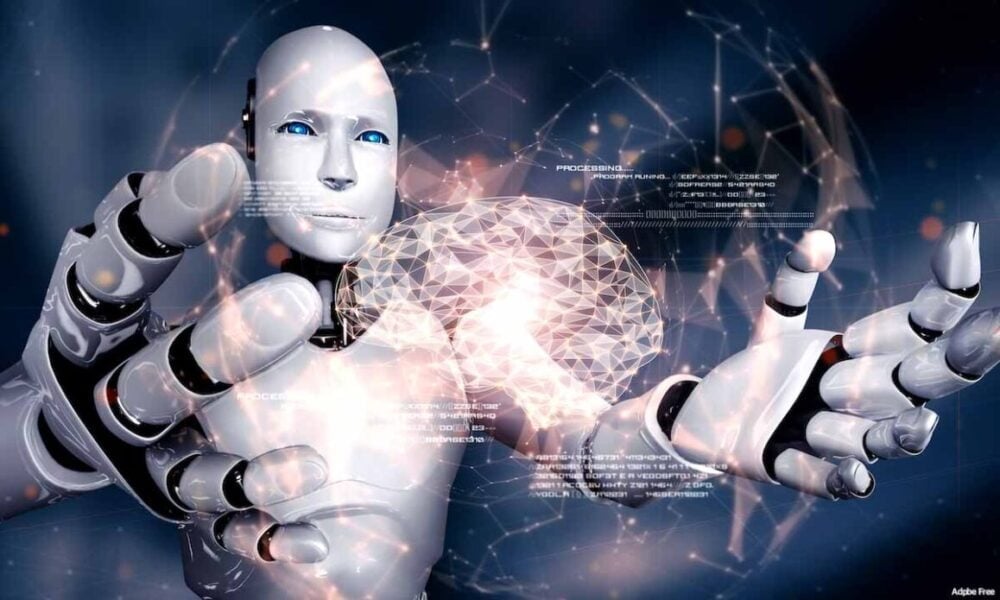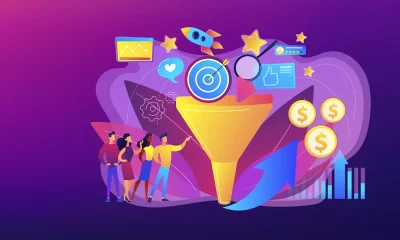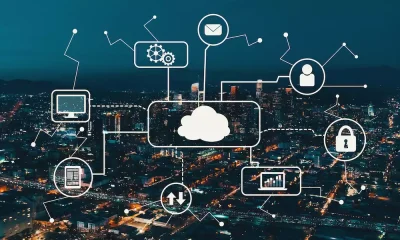Technology
Knocking Elbows: Three Important Ways AI Is Changing Workplace Teams

How has your workplace gotten smarter? Most companies are now using collaboration tools for online meetings and remote team cohesion, which has been a significant transformation for physical offices. However, just about everything in business is evolving with digital transformation improving operations, teamwork, security, productivity, and knowledge management – to name just a few areas now relying on smart techs like robotics, automation, AI, and machine learning.
Change In Workplace Teams
You’ll find streamlined communications technologies like Zoom, Slack, Microsoft Teams, Nextiva are helping workers communicate from a distance.
Smarter data analytics changing everything about consumer market patterns and how businesses use the information in their customer discovery, lead generation, sales, and retention processes.
Plus, safety technologies and worker surveillance is helping manufacturing teams protect their workers. AI is also crucial in cybersecurity systems for managing large volumes of risk data.
AI has already—permanently—changed the workplace. But terms like ‘robotics,’ ‘AI,’ and ‘machine learning integration,’ still bring to mind a future that feels far away, says Zain Jaffer, CEO of Zain Ventures and host of PropTechVC. Jaffer is an entrepreneur, an active mentor, and a tech and real estate investor.
The truth is every team operating today has a connection to enhanced intelligence, whether it’s something they’re encountering in their own operations or the competitive advantage they’re contending with from their industry peers.
Zaffer also believes one of the significant areas of impact for artificial intelligence in the workforce is the quieter effect on workplace teams; how they’re composed, maintained, managed, and engaged.
So, where exactly is AI proving a game-changer for workplace teams? There are three core areas of digital transformation, including:
- The smart co-worker
- Knowledge distribution
- AI and team composition
Building New Pyramids: AI and Team Composition
Jaffer says agility is a team’s best asset. During the complications of the pandemic, ample research was published regarding the demonstrated success of more agile team structures.
Teams to be lean and agile
Lean and agile teams can better self-distribute their contributions across necessary tasks and take an autonomous approach to the larger goal. The results are often better than what a manager or employer would be able to engineer with a top-down approach, says Jaffer.
Rather than replacing the need for creative, self-led workplace activity, robotics in the workforce will complement a more diffuse approach.
Larger teams will be autonomous under the guidance of ‘robo bosses,’ smart technology-empowered ‘managers’ who will be able to oversee project allocation using AI-empowered algorithms and software.
Smart machines can facilitate better team coordination, track deadlines, adjust delivery schedules, and monitor the results across important verticals like sales, financial outcomes, or client satisfaction.
Robot team leader?
The idea of a robot leading a team seems far out, but by the decade’s end, integration with cloud communication platforms should make this transition smooth.
It will be time and cost-efficient to empower those technologies to take some of the project management inherent in employee communication into their own ‘hands.’
While it’s a shift that will happen gradually, it’s one to be unafraid of; this approach to autonomous team management should increase employee fulfillment and free up managers for other critical and creative tasks.
Smarter Knowledge Distribution
In today’s workplace, employees in the same team have had to master domain-specific skills and designations. A content team comprises a social media manager, an email marketing specialist, a content writer, a researcher, an SEO specialist—the list continues.
The new robotics-empowered approach to teams allows more prominent groups to come together under an intelligent management system. Because larger teams can be accommodated and more collaboration can occur in an organized way, employee silos can begin to break down without losing progress.
Progress might be accelerated with a more diverse set of skills among contributors. The integration of robotics will soon lead to fewer designations across the organization. Hierarchies will be determined by an employee’s full skill set rather than pre-programmed structures and titles. The focus will shift to knowledge instead of workplace status.
Employee performance
Jaffer also believes a more holistic approach to employee performance and potential can determine their compensation and responsibilities within the organization. Like almost all things, having more AI-driven data will help take the bias out of corporate decisions and ensure the company uses all of its personnel to their highest and best use.
Side by Side: The Smart Coworker Phenomena
As a society, we’ve already become quite comfortable with the help of robotic assistants. That our voice can turn the lights out or trigger Alexa’s weather reporting was consequential, if subtle, step in that direction. Similarly, smart assistants might be the workplace’s first touchpoint for robotic ‘coworkers’.
Intelligent personal assistants at work can help with task management, communications, and data analysis on a personal level related to the employee’s project or daily tasks. But the evolution from that point on will be vast.
A robot co-worker?
Robotic-empowered technologies have the power to work 24/7 without the average human costs. That means middle management tasks and repetitive labor can occur overnight, says Jaffer.
With efficiency, skill, and data-based knowledge, robots can help with some of the day-to-day decision-making, including the delegation of work and the prioritization of tasks based on predictive analytics.
When employees log back into work or return to the office in the morning, it will soon feel as if a smart and capable coworker has been working on their behalf overnight.
The powerful upside will be that these insights have data as a backbone. Far from the dystopian ‘robot takeover,’ robotics in the workforce can actually help industries move toward the long-held goal of data-based decision making, free from bias, prejudice, and hierarchy.
Data can pick the right team member for the project and help companies ensure their pay structure reflects where the value is coming from. Smart machines can report accurately on the success of ventures without outside influence or the fear of hurting feelings.
Jaffer’s final comment is that the workforce can be a place where individuals are empowered, talent is celebrated, and the equal distribution of resources can be coded for. It’s a hopeful outlook, and it’s getting closer every day.









